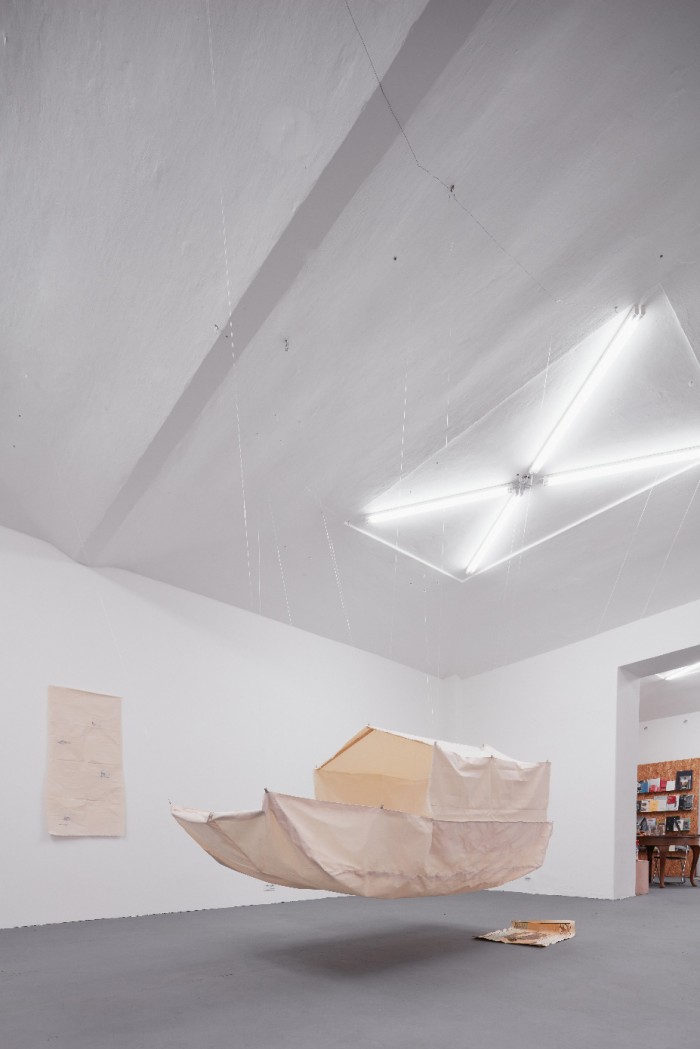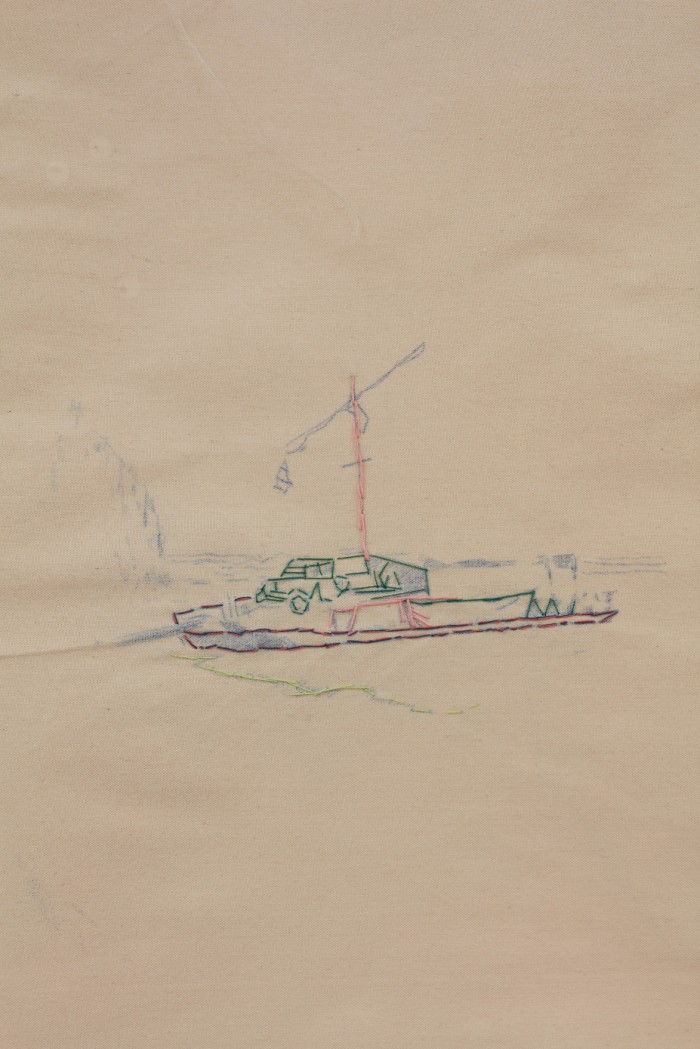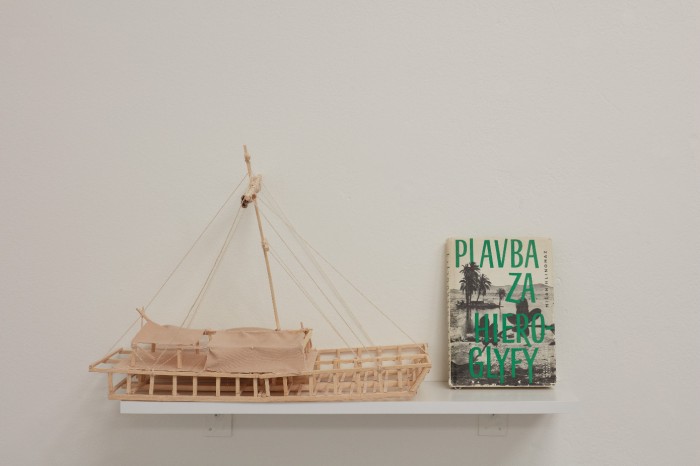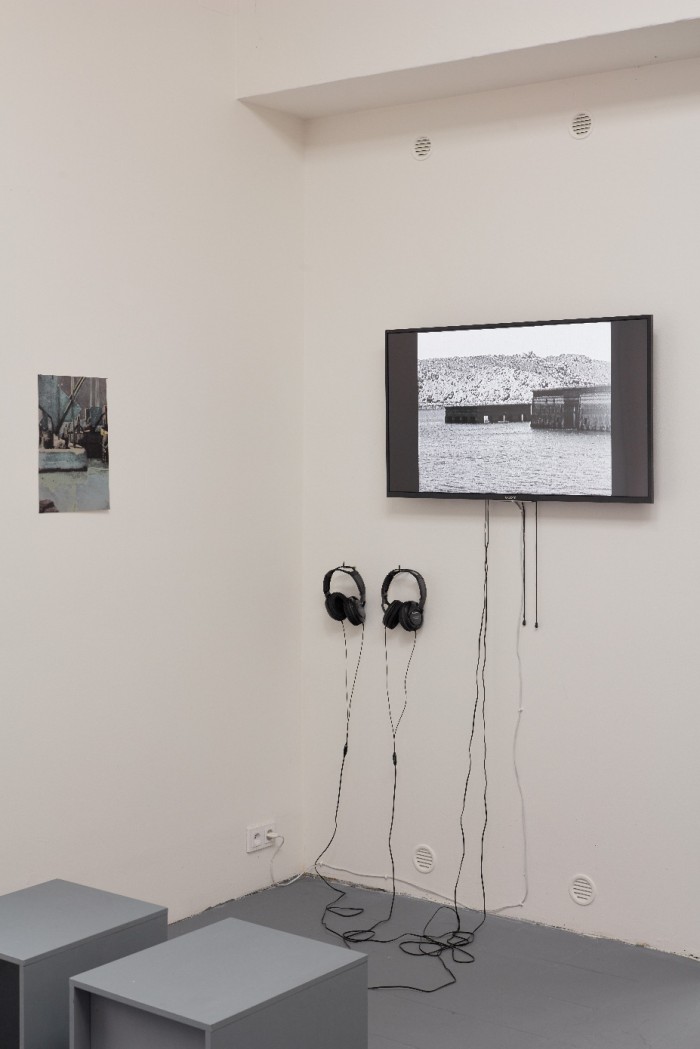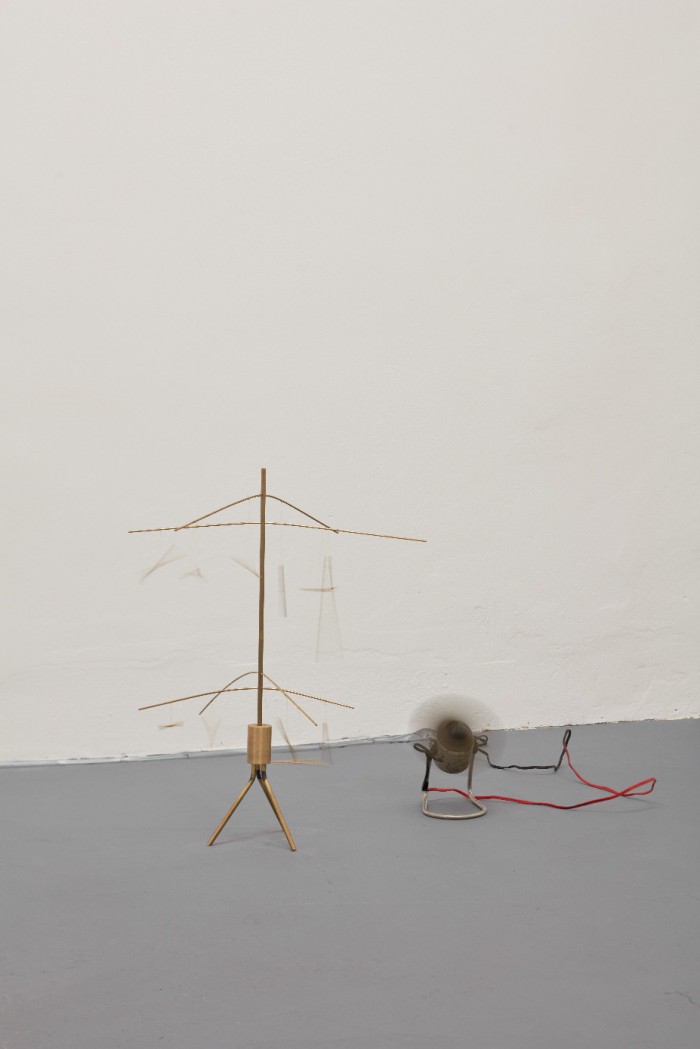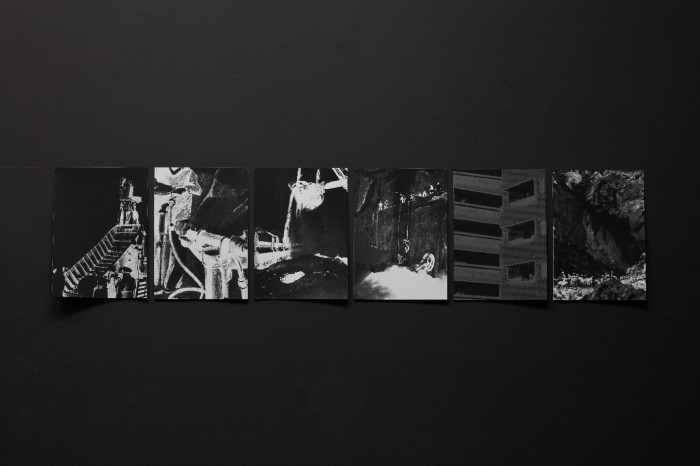Ala Younis: High Dam. Modern Pyramid
{~ '2020-12-16 00:00:00' | amDateFormat: 'D/M' ~}–{~ '2021-05-15 00:00:00' | amDateFormat: 'D/M/Y' ~}
Curator: Rado Ištok

High Dam: Modern Pyramid, the solo exhibition by the research-based artist Ala Younis, takes as its starting point her long-term research into the politics and representation of the Aswan High Dam. Built across the Nile near Aswan in Egypt during the 1960s, the dam was a major nation-building and modernisation project of the newly independent state under the leadership of the President Gamal Abdel Nasser. Often described as ‘modern pyramid’, it was pivotal to Egypt’s agricultural growth, industrialisation and ensuing social reforms, yet at the cost of flooding the historical land of Nubia. The Nubian population in Egypt and Sudan was faced with resettlement and the ancient Nubian heritage was at risk of permanent loss. The dam also became a site of competing political and economic interests during the global Cold War, including the 1955 arms deal between Egypt and Czechoslovakia facilitated by the USSR. While the dam was designed by the Soviet engineers, the West financed the relocation of numerous ancient temples, most famously the two temples at Abu Simbel, as a part of the UNESCO International Campaign to Save the Monuments of Nubia.
The exhibition High Dam: Modern Pyramid revisits this history and related micro-histories through a body of newly commissioned and existing works. The newly commissioned work The Friend of Nubia (2020) in the main gallery includes a model of the expedition vessel Sadiq en-Nuba (The Friend of Nubia), which served as the floating base for the five Czechoslovak expeditions in Nubia. The catamaran was constructed in the Holešovice shipyards from disused military pontoons and subsequently dismantled and shipped to Egypt, where it was reassembled – similar to some of the Nubian temples at the time. The model thus also experiments with the possibilities of reassembly. The catamaran was designed by the boat captain Milan Hlinomaz and anecdotes from his book Plavba za hieroglyfy (Sailing to the Hieroglyphs, 1967) inspired the series of embroideries. Parallels between archeological and military campaigns are striking: not only did the expedition receive equipment from the Czechoslovak army, but the Czechoslovak Institute of Egyptology at Charles University in Prague and Cairo was established in 1958 in part as a consequence of the 1955 arms deal.
The Aswan High Dam also became a site of the propaganda apparatus of Egypt (from 1958 to 1971 known as The United Arab Republic, UAR) and the USSR, which governed the ways in which the dam was depicted in film and literature, such as in the works of Youssef Chahine and Sonallah Ibrahim. The Chahine Mobile and Posters (2019) compare scenes in the various versions of the film directed by the Egyptian film director Youssef Chahine and commissioned as the first UAR and USSR co-production to promote the construction of the dam. Inspired by the kinetic sculptures of Alexander Calder, the mobile is an abstraction of the various elements of each of the three versions of the film, suspended in the air and changing configurations triggered by the blowing of a Soviet fan – representing the propaganda and censorship apparatus governing the editing processes. The Sonallah Model (2020) in the small gallery refers to the Egyptian Marxist writer and former political prisoner Sonallah Ibrahim and his literary works based on his stay on the construction site.
The Button Box (2019) symbolises the 1964 ceremony in which the Egyptian President Nasser and the Soviet leader Nikita Khrushchev pressed the button that diverted the Nile from its ancient riverbed into a canal, allowing for the next stage of the construction to begin. While Youssef Chahine caught this moment on film and even gave signal to Nasser and his international guests, Sonallah Ibrahim was on the occasion of Khrushchev’s visit released from his imprisonment. The redirecting of the Nile also meant the beginning of the rising water level, slowly but surely flooding the Nubian villages and archeological sites. The series of prints Mobilities (2020) captures some of the ensuing movements of both material, such as the relocated temples and the construction material, as well as humans, including the displaced Nubians and the construction workers. The Aswan High Dam reshaped not only Egypt’s (and Sudan’s) geography but arguably the whole Egyptian nation in its role as a catalyst for modernisation and social reforms in the newly independent country, and thus set an example for many other newly independent countries.
Ala Younis is a research-based artist trained as an architect and based in Amman, Jordan. Her practice also includes curating, film, editing and publishing. Her projects deal with collective experiences that collapse into personal ones, with how the archive plays on predilections and how its lacunas and mishaps manipulate the imagination. Her work has been featured in numerous solo exhibitions internationally, and at the Istanbul and Gwangju Biennials, the New Museum Triennial, and her Plan for Greater Baghdad (2015) premiered in the main exhibition of the 56th Venice Biennale. In 2013, she curated Kuwait’s first national pavilion at the 55th Venice Biennale. She is the co-founder of the Kayfa ta publishing initiative, and a member of the Advisory Board of Berlinale’s Forum Expanded and member of the Academy of Arts of the World in Cologne. For more info visit https://alayounis.art.
Photo: Peter Fabo



